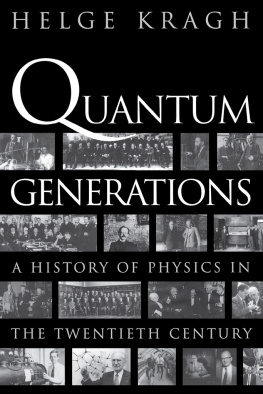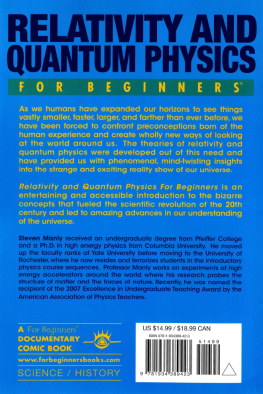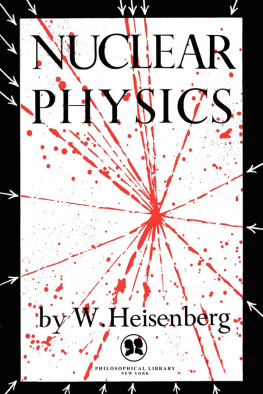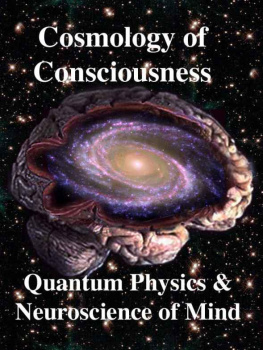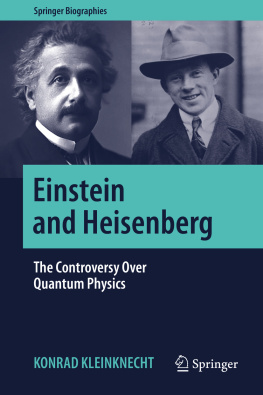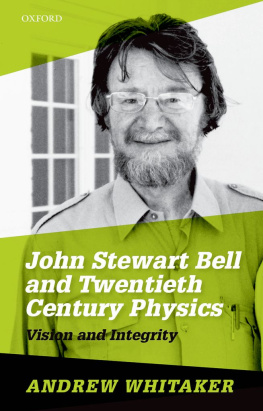QUANTUM GENERATIONS
QUANTUM GENERATIONS
A HISTORY OF PHYSICS IN THE
TWENTIETH CENTURY
HELGE KRAGH
PRINCETON UNIVERSITY PRESS
PRINCETON, NEW JERSEY
Copyright 1999 by Princeton University Press
Published by Princeton University Press, 41 William Street,
Princeton, New Jersey 08540
In the United Kingdom: Princeton University Press, 3 Market Place,
Woodstock, Oxfordshire OX20 1SY
All Rights Reserved
Fifth printing, and first paperback printing, 2002
Paperback ISBN 0 691 09552 3
The Library of Congress has cataloged the cloth edition of this book as follows
Kragh, Helge, 1944
Quantum generations : a history of physics in the twentieth
century / Helge Kragh.
p. cm.
Includes bibliographical references and index.
ISBN 0 691 01206 7 (cloth : alk. paper)
1. Physics History 20th century. I. Title.
QC7.K7 1999
530'.09'04 dc21 99 17903
British Library Cataloging in Publication Data is available
www.pup.princeton.edu
ISBN-13: 978-0-691-09552-3 (pbk.)
eISBN: 978-0-691-21419-1
R0
PREFACE
T HIS WORK WAS written between 1996 and 1998, at the suggestion of Princeton University Press. Originally, when I accepted the invitation to write a book about the development of physics during the twentieth century, I thought it would be a relatively easy matter. I soon became wiser. I should have known that it is simply not possible to write a balanced and reasonably comprehensive one-volume account of twentieth-century physics. What follows is a substitute, a fairly brief and much condensed and selective account of what I believe have been the most significant developments in a century of physical thought and experiment that can well be called the most important century of physics.
The book is structured in three largely chronological parts. The first part covers developments from the 1890s to about 1918, the end of World War I. The second part concentrates on developments between the two world wars, roughly 1918 1945, and the third part takes up developments in the remainder of the century. The chosen periodization should be uncontroversial, and so should the decision to start in the mid-1890s rather than in 1900. It is generally accepted that modern physics started with the great discoveries of the 1890s and not with Plancks introduction of the quantum discontinuity in 1900.
I have endeavored to write an account that goes all the way up to the present and so includes parts of very recent developments that normally would be considered to be not yet historical. There are problems with writing historically about recent developments, but these are practical problems and not rooted in contemporary science being beyond historical analysis. The book is of a type and size that preclude any ambitions of comprehensiveness, not to mention completeness. At any rate, a complete history of twentieth-century physics would probably be as pointless as it would be impossible to write from a practical point of view. Like most historical works, this one is selective and limited in scope and content. The selections can undoubtedly be criticized. The material I have included has been chosen for a variety of reasons, one of them being the availability of historical writings and analyses. The books goal is to give an account of the development of physics during a one-hundred-year period that is digestible, informative, and fairly representative. There are, unavoidably, many interesting topics and subdisciplines that I do not include, in part because of lack of space and in part because of lack of secondary sources. Among the topics that I originally contemplated to include, but in the end had to leave out, are optics, materials science, chemical physics, geophysics, medical physics, physics in third-world countries, and the post-1950 discussion concerning the interpretation of quantum mechanics. Yet I believe that what is included does not, in spite of the more or less arbitrary selection criteria, misrepresent to any serious extent the general trends in the development of modern physics.
The problem of a balanced account is a difficult one, not only with regard to subdisciplines and dimensions, but also with regard to nations. Physics is and has always been international, but of course, some nations have contributed more to scientific progress than others. My account is essentially a history of physics in Europe and North America, with some mention also of contributions from Japan. This is simply a reflection of how the important contributions to physics have been distributed among nations and geographical regions. Whether one likes it or not, most of the worlds nations have played almost no role at all in the development of modern physics. One of the significant trends of the postwar period has been the dominance of American physicists in a science that was originally European. Because of this dominance, and because of the strong position that American scholars have in the history of science, the historical knowledge of modern American physics is much richer than it is in the case of Europe and other regions, including the former Soviet Union. It is quite possible that the relative predominance of writings about American physics has caused my account to focus too much on the American scene, but under the circumstances, there was little I could do about it.
Taken together, the twenty-nine chapters cover a broad spectrum of physics, not only with respect to topics and disciplines, but also with respect to the dimensions of physics. We should always keep in mind that physics (or the physical sciences) is a rich and multifaceted area that has implications far beyond the purely scientific aspects related to fundamental physics. I have wanted to write a broad book, although not so broad that it loses its focus on what is distinctly the world of physics. The present work is not devoted solely to the scientific or intellectual aspects of physics, but neither does it concentrate on social and institutional history. It tries to integrate the various approaches or, at least, to include them in a reasonably balanced way. I have also paid more attention to applied or engineering physics than is usually done. To ignore the physics-technology interface, and concentrate on so-called fundamental physics alone, would surely give a distorted picture of how physics has developed in this century. Not only are many of the worlds physicists occupied with applied aspects of their science, and have been so during most of the century, but it is also largely through the technological applications that physics has become a major force of societal change.
The intended audience of the book is not primarily physicists or specialists in the history of science. It is my hope that it will appeal to a much broader readership and that it may serve as a textbook in courses of an interdisciplinary nature or in introductory courses in physics and history. With a few exceptions I have avoided equations, and although the book presupposes some knowledge of physics, it is written mainly on an elementary level. My decision to avoid the note apparatus that is often seen as a hallmark of so-called academic books is an attempt to make the book more easily accessible to readers not acquainted with the (sometimes rather artificial) note system of more scholarly works. In almost all cases of citations, I have included references in the text to sources where they can be readily found. Rather than referring to the original source, I have in most cases referred to a later, secondary source, quite often the place where I happened to pick up the quotation. In a book of this type, there is no point in numerous references to old papers in

